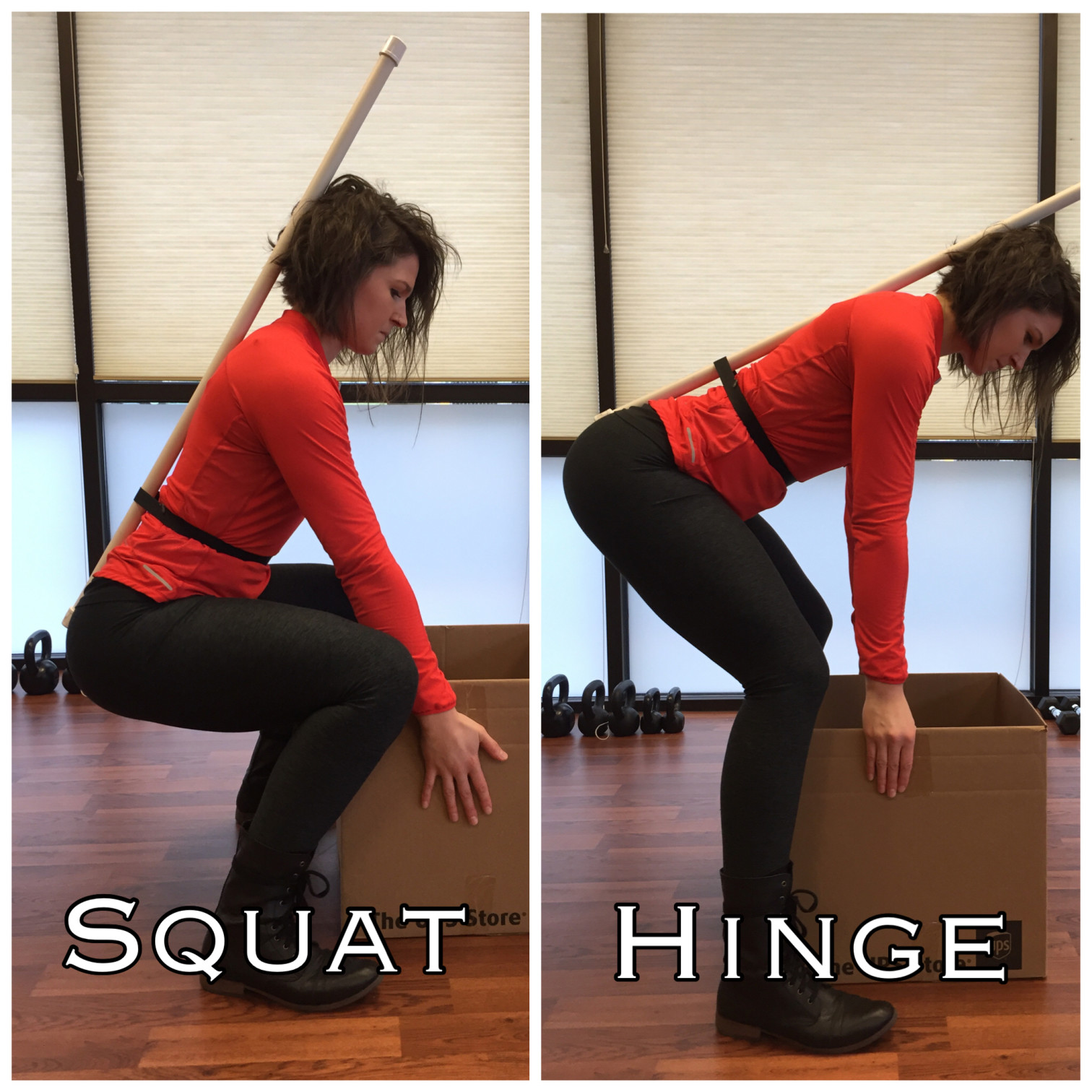Difference Between Hinge and Squat Exercises
2016-08-10

In functional fitness realms it is very popular to discuss the difference between a hip hinge and a squat pattern. Why? Because in a hip hinge we prioritize the use of our posterior chain (loading of the hamstrings and glutes) where in a squat pattern we get far more knee bend bringing in more of the quadriceps. So?!
Well, when we want to pick things off the ground we actually want to emphasize a hip hinge pattern as it can better save our back. Specific activities may prioritize the use of one or the other like running, jumping, or really powerful activities. So, knowing which one you want to use and being able to differentiate these patterns is a big part of having strength that really transfers to life.

The major differences you will see is that the squat has the shin going forward and the hinge keeps the shin vertical. You will also notice that trunk angle is quite different. The squat has the trunk more vertical while the hinge has it closer to parallel to the ground. These two differences can really help you change how people move!
Now of course this post isn’t JUST about squatting and hinging, but how we do a good job discussing this when we are just moving up and down, yet, we forget when we start moving in more directions how important it is to maintain.
In DVRT Ultimate Sandbag Training you can tell we do a lot of lateral movements. The importance of them is something we have discussed this past week so I want to talk about what we miss! Generally, anytime we move to the side we think of this as a lunge. However, that is like saying anytime we move up and down we are squatting.
Just like the hinge and squat we see in more stable environments, when we start moving we can prioritize a hinge or a lunge. How do you know which one is which? Many of the same concepts still apply.
If we are going to do a clean, high pull, snatch, good morning, or deadlift, we are going to see a more vertical shin, torso closer to parallel, and probably a smaller step than if we were to lunge. Obviously then during the lunge we have a more upright torso, the shin may go a bit forward, and we can’t produce the power for the movements previously mentioned.

You can see the differences between the hinge at the top and lunge on the bottom.
This is so important as Dr. David Frost of the University of Toronto often says the goal of real life training is “to keep the standard and change the condition.” In this case, it means being able to differentiate hip hinge versus a squat/lunge no matter the direction we move.
In order to illustrate this point I wanted to share some awesome DVRT coaches using some Ultimate Sandbag Training exercises to build these skills. Now, in this series I wanted to show you some Ultimate Sandbag Training lunges that help build our frontal plane strength. The cool part is that these exercises are demonstrated by Dr. Craig Liebenson who is a leading therapist and has used these Ultimate Sandbag Training exercises for THIS specific purpose.
My point in doing so is showing you that building strength in all directions doesn’t mean you have to move in crazy ways, but sometimes the best means are by RESISTING forces too! So, my question is can you differentiate the hinge and squat/lunge in all directions and can you not only produce great force, but resist it as well?!
© 2025 Ultimate Sandbag Training. Site by Jennifer Web Design.






